Home Boating Safety Guide
BOATING SAFETY GUIDE
Boating is a popular pastime throughout the United States. According to the Boating Safety Division of the U.S. Coast Guard (USCG), 11,957,886 vessels were registered in 2021. Although boating is a recreational activity, safety standards must be taken seriously.
WHAT IS THE CAUSE OF MOST BOATING ACCIDENTS?
At least 4,439 boating accidents occurred in 2021, resulting in 658 deaths and 2,641 injuries. These accidents are almost always preventable.
CONTRIBUTING FACTORS
The USCG statistics show that the following circumstances were the top 10 contributing factors in boating accidents:
- Inattention
- Inexperience
- Improper lookout
- Machinery failure
- Excessive speed
- Alcohol use
- Force of wave
- Navigation rules violation
- Hazardous waters
- Weather
- Alcohol use is the leading factor identified in fatal boating accidents. According to the BoatUS Foundation, half of all boating accidents involve alcohol.
Boating under the influence is not only dangerous, but it is a federal offense punishable by a fine of $1,000. It is also a state crime that could result in higher fines, imprisonment, loss of boating privileges, loss of driving privileges and seizure of the boat.
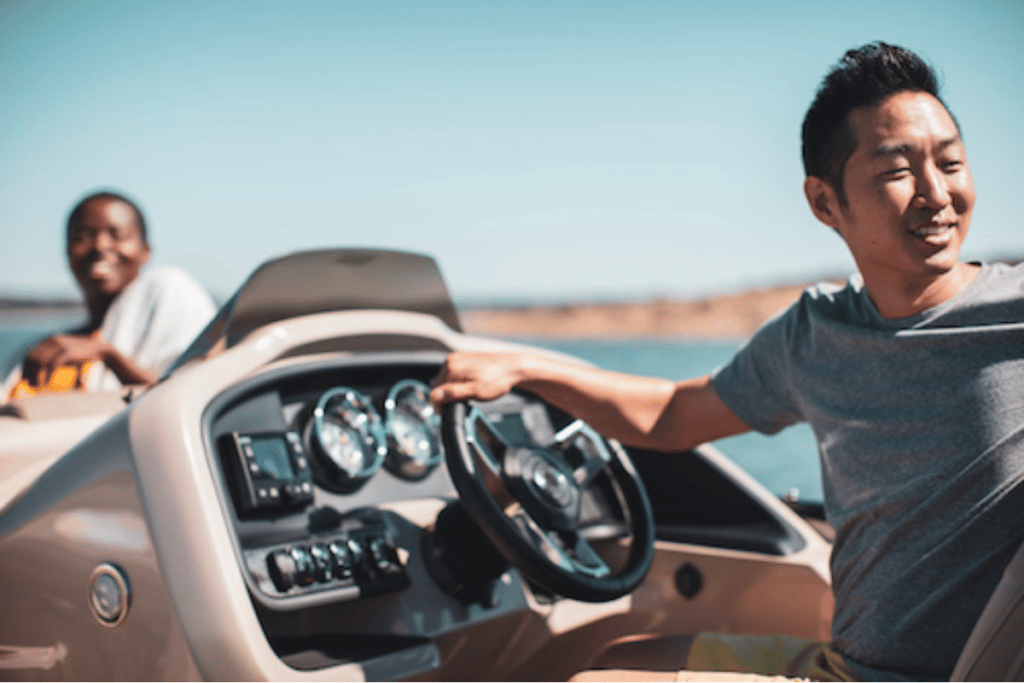
TYPES OF ACCIDENTS
The most common types of boating accidents that result in death are as follows:
- Collision with another recreational boat
- Collision with a fixed object
- Water intrusion
- Grounding
- Falling overboard
- Capsizing
- Skier mishap
- Collision with a submerged object
- Departing the vessel
- Being ejected from the vessel
The vast majority of boat accident fatalities in 2021 were by drowning (81 percent), and 83 percent of those who drowned were not wearing life jackets. Approximately 188 boating accidents involved at least one person striking the boat’s propeller, leading to 24 deaths and 191 injuries.
Approximately three quarters of drowning accidents occurred in vessels that were less than 21 feet in length, with open motorboats, personal watercraft and cabin motorboats being involved in the highest percentage of accidents. Open motorboats, kayaks and pontoons were involved in the highest number of fatal accidents.
Approximately three quarters of fatal accidents occurred when the boating operator had not taken a boating safety course.
BOAT SAFETY CHECK AND EQUIPMENT CHECKLIST
The most important safety measure you can take as a boater is to plan ahead. Lake Powell Resort in Arizona advises the following pre-trip considerations:
Be familiar with the forecast and plan your outing when the weather is conducive.
- Prepare for inclement weather in case of unexpected weather events.
Familiarize yourself with your boat.
- Read the owner’s manual.
- Know where the controls are located.
- Know the location of safety equipment and how to use it.
Provide a friend, relative or marina with a float plan that includes:
- A description of where you are boating with expected departure and arrival times
- Name and contact information of everyone on board and an emergency contact name and number for each
Inspect your boat before you depart, and check the following:
- Fuel level
- Steering and throttle controls
Engine compartment:
- Check for oil leaks.
- Drain any water and replace the bilge plug securely.
- Ensure the battery is fully charged.
Hoses
- Check for leaks.
- Make sure clamps are tight.
Have a communication plan that includes:
- Cell phones
- Radio (check with your marina or local authorities to find out what channel to use in emergencies in your area)
- Consider taking a boat safety course to learn how to handle emergency situations.
- Bring the necessary safety gear that will keep you and your boating companions safe.
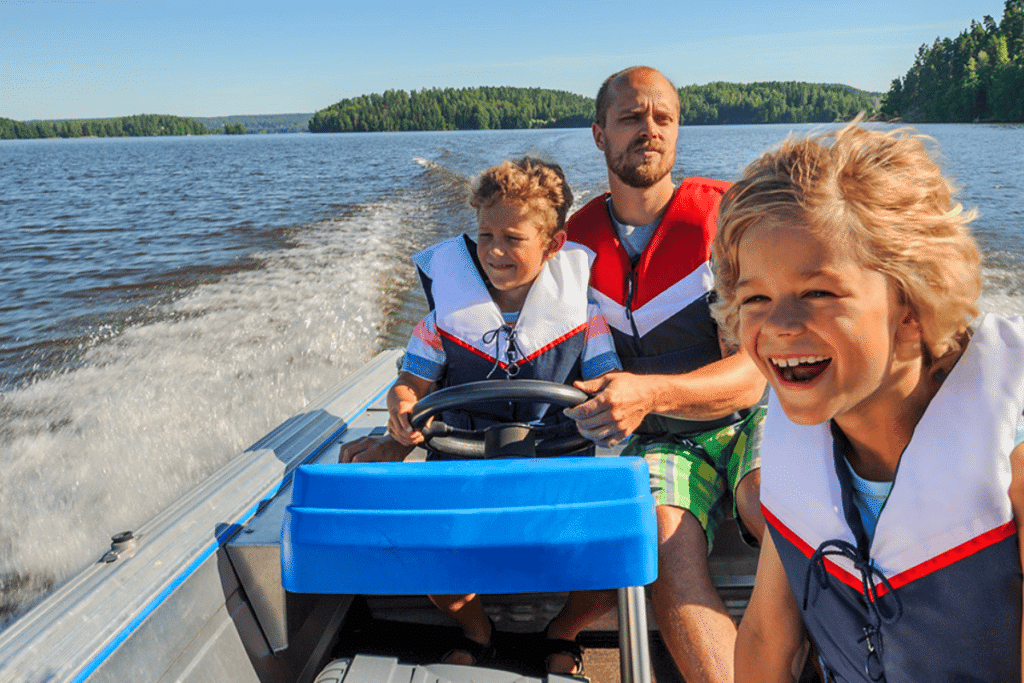
BOATING EQUIPMENT CHECKLIST
Emergencies can occur suddenly while you are on the water, and the proper equipment is crucial to ensuring the safety of everyone on board. The USCG recommends bringing the following equipment aboard every time you venture out onto the water. Some of this equipment is required by law:
- Life jackets for each person on board
- Personal flotation devices that can be thrown into the water
- Fire extinguishers
- Visual distress signals for nighttime use
- A sound-producing device
- Ventilation ducts
- Backfire flame arrestors (one on each carburetor of gasoline engines)
- Anchors and chains
- Buckets
- Oar or paddles
- First aid kit
- VHF radio
- Extra water and fuel
- Tool kit
- Sun protection
- Flashlight
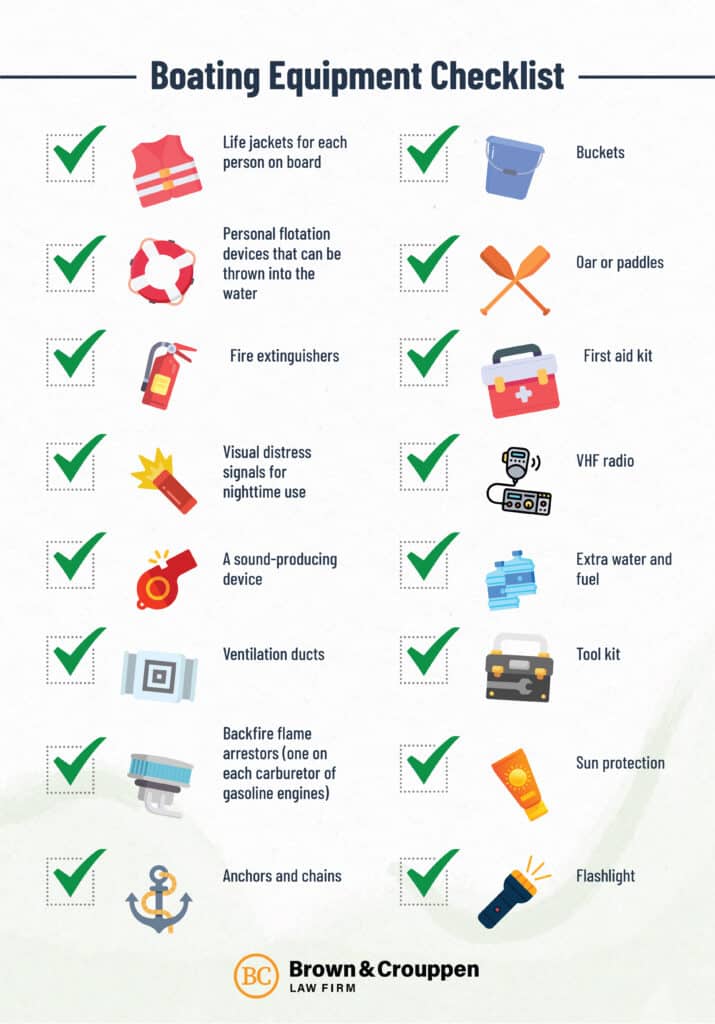
Arguably the most important safety gear is a life jacket for each person on board. However, life jackets have no effect unless they are worn. The Safe Boating Campaign recommends that boaters wear life jackets at all times while boating, whether the boat is motorized or not. To be effective, life jackets must fit properly. A well-fitting life jacket is snug, but not tight.
BOATING SAFETY COURSE
Boating safety courses save lives. According to USCG statistics, only 16 percent of boating fatalities in the United States in 2021 occurred when the boat operator had a nationally-approved boater safety education certificate.
Most states require boaters to take a boating safety course prior to being authorized to launch a boat. According to the USCG, the only states that generally do not require most boaters to take safety courses are the following:
- Alaska
- Arizona
- Idaho
- South Dakota
- Wyoming
Some of these states do require boater safety courses in certain circumstances. You can look up your state’s requirements on the USCG’s boating safety website.
Regardless of the requirements, every boater should consider taking a boating safety course. It could save your life as well as the lives of those on board. The BoatUS Foundation offers free state-specific boater safety courses online. You can check the BoatUS Foundation’s website to see if a free course is available in your state.
WEATHER AND BOATING
Weather can change quickly while you are boating, and bad weather can become an emergency as large waves hit the boat, waves and rain bring water into the boat, and the boat begins to feel out of control as it rocks violently and is tossed to and fro.
The safest approach is to stay up to date with the latest weather information and avoid boating when inclement weather is expected.
WATCH FOR SIGNS OF BAD WEATHER
Always stay alert to changes in the weather, which could include the way the weather looks or feels. The USCG has provided the following guidance on the signs that indicate bad weather is approaching:
- Flat clouds lowering and thickening
- Puffy clouds rising
- Dark, ominous clouds, especially to the west/southwest
- A sudden temperature drop
- The appearance of a halo around the sun or moon
- Changes in wind speed or direction
- Lightning
- The sea seems heavier
- Heavy static on the AM radio
- A falling barometer
If you see any of these signs, try to get to shore well before the storm hits if you can do so safely, even if the nearest shore is an island or somewhere other than your marina.
STAYING SAFE IN A STORM
If you are unable to escape the storm, there are strategies you can employ to keep yourself and your passengers safe, but it is important to stay calm. The USCG offers the following guidance:
- Make sure passengers are wearing a properly secured life jacket and seat them on the bottom of the boat near the centerline.
- Latch everything on the boat so nothing fills with water, and keep the bilges from filling with water.
- Turn on the running lights.
- Slow the boat down, using just enough speed to keep moving forward.
- Head into the waves at a 45-degree angle.
- If the engine fails, drop a sea anchor from the bow to keep the boat headed into the waves.
- If you do not have a sea anchor, a bucket should suffice.
- If necessary, anchor the boat until the storm passes
SAFETY WHEN TOWING (WATER SKIERS, TUBERS, WAKEBOARDERS)
Watersports add a significant amount of fun to recreational boating, but without a mind to safety, they can be especially hazardous to the person being towed. The following tips from Barletta Boats will help you stay safe while enjoying these activities:
- Consider taking professional lessons.
Ensure your boat is properly equipped.
- You will need a ski pole or a tow ring.
- Ensure your boat has a sufficient tow limit.
Attach your ropes only to the designated attachment points on the boat.
- Pulling a person through water requires significant strength.
- Attaching the ropes in the wrong place could cause undue pressure on the boat.
- Bring a spotter (a third person to watch the person being towed).
- Equip your boat with a mirror to allow the driver to also watch the person being towed.
- Use rope that is specifically designated for the type of watersport you are planning.
Choose the area carefully where you will tow.
- Choose areas that are not too crowded.
- Choose a day and location that does not have choppy water.
TIPS FOR BOATING SAFETY
Boating can be a fun, safe activity for outdoor enthusiasts of all ages as long as safety is not neglected. It is important not to become complacent about safety, no matter how often you venture out. The following tips from the National Safety Council will help you prepare for a safe voyage:
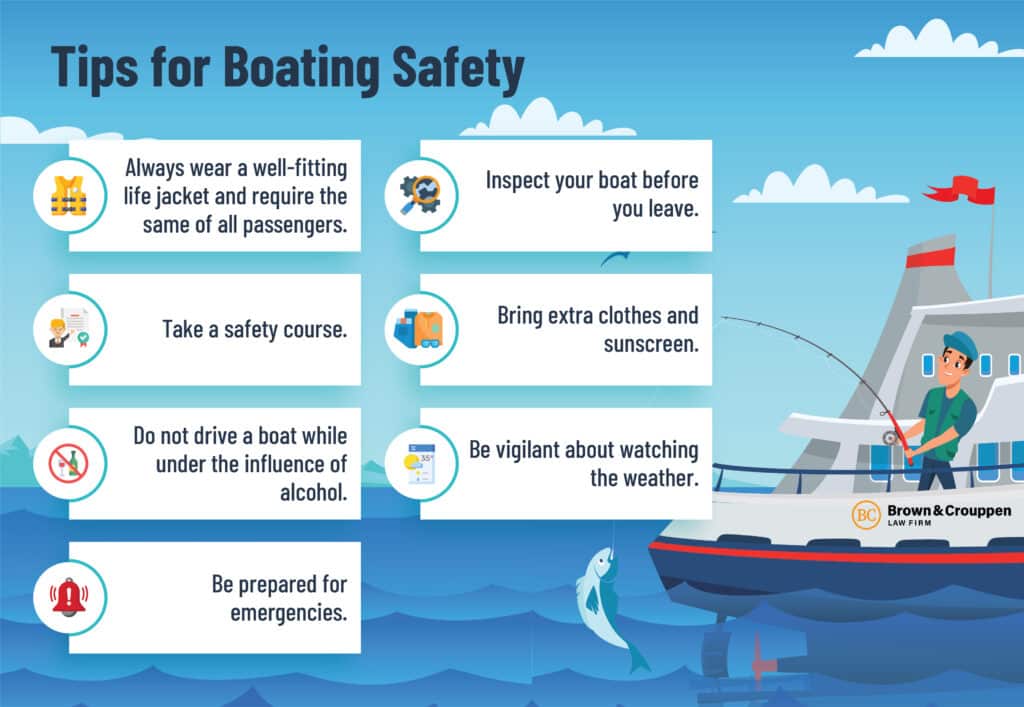
- Always wear a well-fitting life jacket and require the same of all passengers.
- Take a safety course.
- Do not drive a boat while under the influence of alcohol.
- Be prepared for emergencies.
- Inspect your boat before you leave.
- You can get a free vessel safety check from your local USCG Auxiliary or U.S. Power Squadron.
- Bring extra clothes and sunscreen.
- Be vigilant about watching the weather.
While on the water, Boatim Magazine recommends the following safety practices:
- Know your vessel’s cargo limit and stay below the boat’s maximum weight capacity.
- Drive at a safe speed, especially in areas with high boating traffic.
- Designate passengers to serve as lookouts.
- Maintain a safe distance from shore, other boats and swimmers.
- Supervise children closely.
- Behave prudently and use common sense.
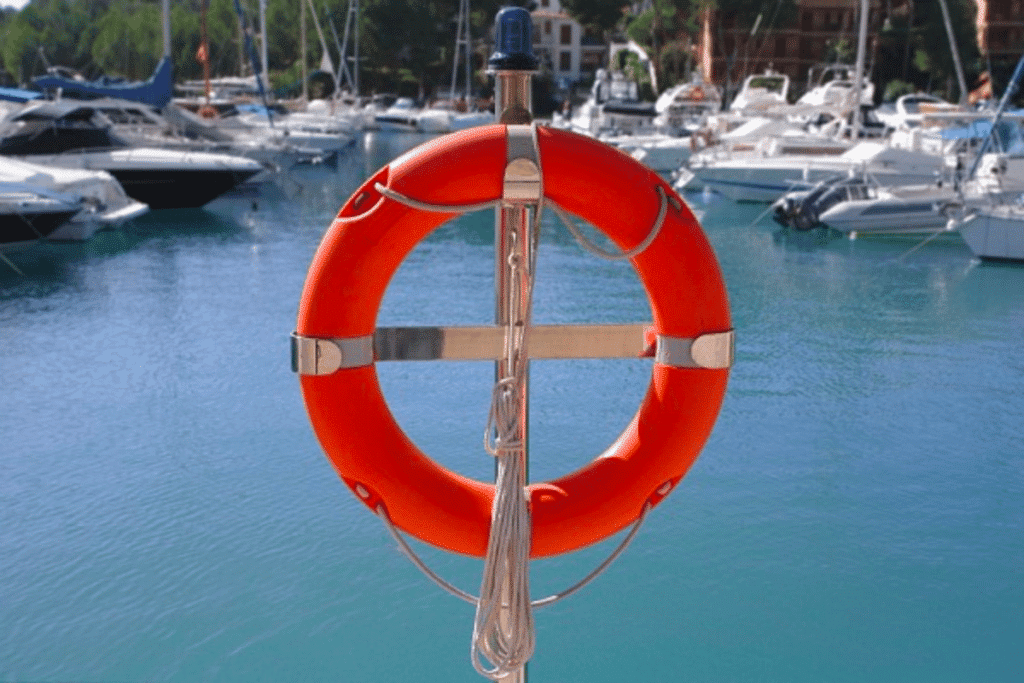
SAFETY WHILE FISHING
The National Park Service has provided the following safety guidelines to ensure your fishing trip is enjoyable, safe and successful:
- Wear a life jacket.
- If you are fishing in a group that consists of children or poor swimmers, designate one person to supervise.
- Use sunscreen and wear protective clothing.
- Prevent getting hooked or hooking someone else by checking around yourself before you cast your line.
- Avoid walking barefoot in the water, where discarded hooks, glass or sharp rocks can cause injuries.
- Fish only in authorized areas.
- Do not stay in the water if you get too cold.
- Be aware of local wildlife while you are fishing.
- Avoid entering or crossing fast currents.
SOURCES
- https://uscgboating.org/library/accident-statistics/Recreational-Boating-Statistics-2021.pdf
- https://www.boatus.org/alcohol-and-boating/
- https://www.lakepowellmarinas.com/boater-resources/boater-safety/
- https://www.boatus.org/study-guide/equipment/required/
- https://safeboatingcampaign.com/life-jackets/
- https://uscgboating.org/regulations/state-boating-laws-details.php?id=4&title=[2.1]Boating%20Education%20Requirements
- https://www.boatus.org/free/
- https://www.uscgboating.org/images/420.PDF
- https://www.barlettapontoonboats.com/blog/watersports-safety-guide
- https://www.nsc.org/home-safety/tools-resources/seasonal-safety/summer/boating
- https://www.nps.gov/articles/fishing-safety.htm
SCHEDULE A FREE CONSULTATION
